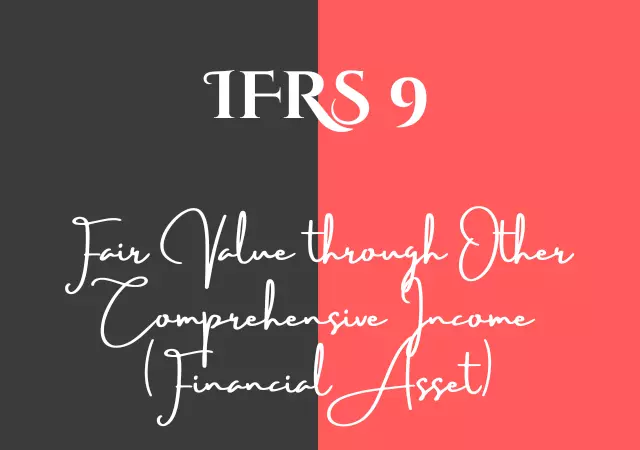IFRS 9 EXPLAINS the concept of FVOCI and its SIGNIFICANCE and requires to RECOGNIZE changes in Fair Value through Other Comprehensive Income rather than in Profit or Loss (P&L).
Table of Contents
FVOCI (Fair Value through Other Comprehensive Income)
International Financial Reporting Standard (IFRS 9) ISSUED by the International Accounting Standards Board (IASB) for financial reporting purposes. The standard was introduced in 2014 to replace the outdated IAS 39 standard, which was CRITICIZED for its complexity and lack of transparency.
1. Fair Value
‘Fair Value’ is the amount that an asset or liability would fetch in an arm’s length transaction between knowledgeable and willing parties.
The concept of fair value is essential for financial reporting because it provides a snapshot of the value of an asset or liability at a particular point in time. The MEASUREMENT of fair value is a critical aspect of financial reporting as it has a significant impact on the financial statements, including the balance sheet, income statement, and cash flow statement.

FVOCI Accounting (As Per IFRS 9)
Under IFRS 9, changes in the fair value of financial assets and financial liabilities that are designated as “FVOCI” must be RECOGNIZED in OCI rather than in profit or loss. This means that changes in the fair value of these assets and liabilities are NOT reflected in the income statement but are instead recorded in a separate section of the statement of comprehensive income.
The purpose of this is to present a more accurate picture of an entity’s financial performance over a given period of time, as it separates gains and losses that are related to long-term changes in value from gains and losses related to changes in the market.
The fair value through OCI (FVOCI) approach is relevant for FINANCIAL ASSETS that are classified as “Available-for-Sale” or “Held-to-Maturity.” This is because these assets are NOT intended to be sold in the near term and are expected to generate future cash flows that are substantially the same as the contractual cash flows. As a result, changes in the fair value of these assets are considered to be long-term in nature and are therefore recognized in OCI.
It’s important to note that changes in fair value through OCI are NOT considered permanent and can be RECLASSIFIED to profit or loss in the future. For example, if an available-for-sale financial asset is sold, the accumulated gain or loss on that asset would be reclassified from OCI to profit or loss. This ensures that the gains and losses are eventually reflected in the income statement and that the financial statements provide a complete picture of an entity’s financial performance.
FVOCI Benefits [Stakeholders Perspective]
One of the benefits of recognizing changes in fair value through OCI is that it PROVIDES more information to investors and other stakeholders about an entity’s financial performance over time. By separating long-term changes in value from short-term fluctuations, it provides a clearer picture of an entity’s underlying Financial Performance. This can be especially USEFUL for entities that hold financial assets or liabilities for an extended period, as it provides a more accurate picture of the value of these assets or liabilities over time.
Another advantage of fair value through OCI is that it provides a clearer picture of an entity’s risk exposure. By separating changes in value that are related to long-term changes in market conditions from changes that are related to short-term market fluctuations, it provides a clearer picture of an entity’s exposure to Market Risk. This information can be useful for investors and other stakeholders in evaluating the risk profile of an entity.
The Bottom Line
FVOCI (Fair Value through Other Comprehensive Income) approach introduced by IFRS 9 provides a more accurate and transparent picture of an entity’s Financial Performance over time. By recognizing changes in fair value in OCI, it separates long-term changes in value from short-term fluctuations.
Chartered Accountant (Institute of Chartered Accountants of Pakistan)
Bachelor of Accounting Honours (Asia e University, Malaysia)